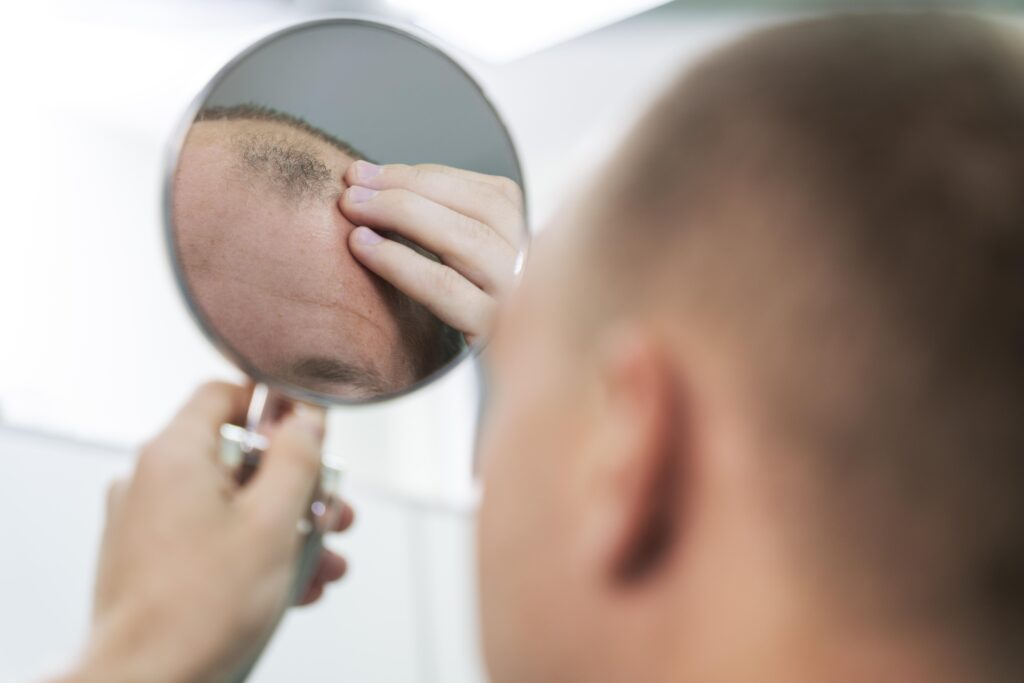
Male pattern baldness, or androgenetic alopecia, is a common condition that affects a significant portion of the male population worldwide. While it’s often viewed as a natural part of aging, the underlying causes of male pattern baldness are deeply rooted in genetics. In this article, we’ll delve into the intricate genetic factors that contribute to male pattern baldness, shedding light on the mechanisms behind this pervasive condition.
The Genetic Basis of Male Pattern Baldness:
Male pattern baldness is a complex trait influenced by both genetic and environmental factors. While environmental triggers such as hormonal imbalances and stress can exacerbate hair loss, genetics play a fundamental role in determining an individual’s susceptibility to balding. Studies have identified a strong genetic component associated with male pattern baldness, with inheritance patterns suggesting that susceptibility is passed down through generations.
The Role of Androgens: Testosterone and DHT
At the heart of male pattern baldness lies the influence of androgens, a group of hormones that includes testosterone and its derivative, dihydrotestosterone (DHT). These hormones play a crucial role in regulating hair growth, but in individuals genetically predisposed to baldness, they can have detrimental effects on the hair follicles. DHT, in particular, binds to receptors in the scalp’s hair follicles, leading to miniaturization and eventual hair loss.
Genetic Variants and Susceptibility Genes:
Numerous genetic variants have been implicated in male pattern baldness, with research focusing on identifying specific genes associated with susceptibility to the condition. One of the well-studied genes is the androgen receptor gene (AR), which codes for the protein responsible for mediating the effects of androgens like DHT. Variations in the AR gene can affect its sensitivity to androgens, influencing the likelihood of male pattern baldness.
Polygenic Inheritance and Complex Traits:
Male pattern baldness is considered a polygenic trait, meaning it is influenced by multiple genes, each contributing a small effect to the overall phenotype. Additionally, interactions between genetic and environmental factors further complicate the inheritance patterns of male pattern baldness. Understanding the polygenic nature of balding can help explain why susceptibility varies among individuals and why predicting the risk of baldness based on family history alone can be challenging.
Conclusion:
While male pattern baldness may seem like a straightforward manifestation of aging, its genetic underpinnings reveal a more intricate and multifaceted story. By unraveling the genetic factors that contribute to male pattern baldness, researchers are gaining valuable insights into the mechanisms driving hair loss and potential avenues for intervention. As our understanding of the genetics of male pattern baldness continues to evolve, so too does the hope for more targeted and effective treatments for this common condition.

